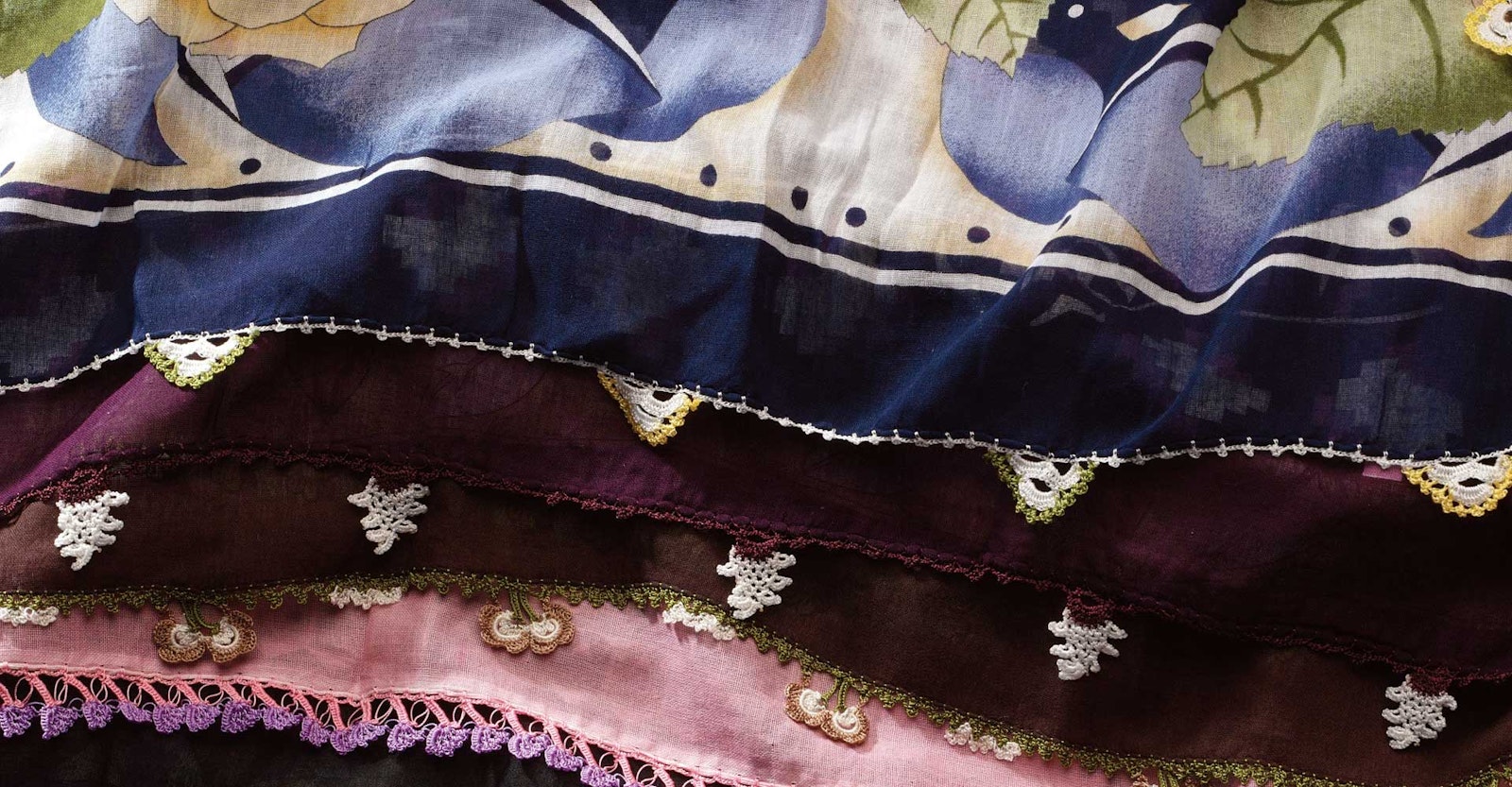Louise Todd Cope has a wonderful quote: "The rituals of life are wrapped in cloth." Weaver, fiber artist, and designer Anita Luvera Mayer was inspired by this quote and the theme of the Celebrate! issue of Handwoven. She wrote a fascinating article about the many ways cloth is used to mark the human race's most important events and add color and beauty to everyday life. Here's an excerpt on traditional headscarves, particularly the Turkish Oya. You can find the rest of the article and more weaving history in the September/October 2016 issue of Handwoven.—The editors
In many areas of the Near East, women wear headscarves with delicate, colorful, and intricate designs dangling from the edge. This is called in bebilla in Greece, Oya in Turkey, and simply Armenian lace in Armenia. The miniature flowers and three-dimensional figures are made by working a traditional knot with needle and thread.
According to Turkish tradition, when the husband is at home, the bride cannot speak arbitrarily, so Oyas worn by the tongue-tied new bride are her means of nonverbal communication. If the Oya is edged in tones of green, it means the new bride is pleased with her new home and husband, but if the Oya is in tones of yellow, it conveys a message of unhappiness and sorrow. If the edging is pepper motifs, it means “we are not on friendly terms.” This silent form of communication was used by women of all ages.
The term “like Oya” has long been an expression of beauty in Turkish society. In the contemporary world, Oyas are worn only as a style statement.
—Anita Luvera Mayer

